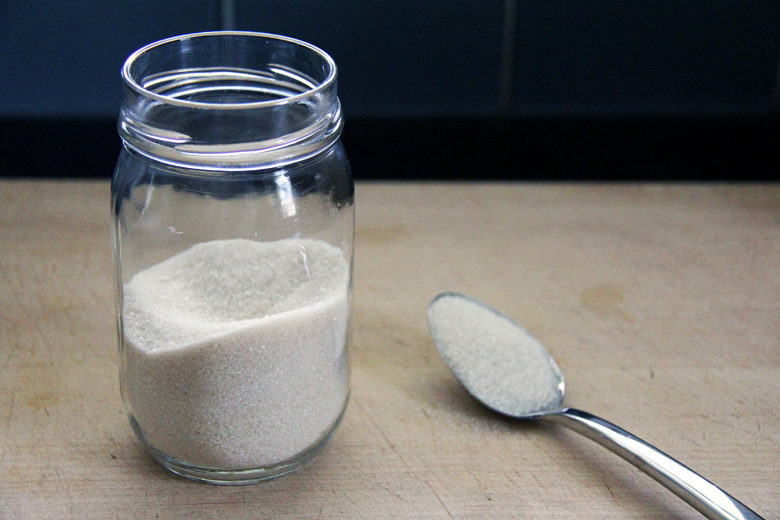
What do sucrose, fructose, glucose, dextrose, galactose, lactose, maltose, corn syrup, high-fructose corn syrup, honey, maple syrup, molasses, evaporated cane juice, muscovado, sucanat, brown rice syrup, malt syrup, barley malt, agave, and maltodextrin all have in common?
They are all different names for sugar, and they are creeping into more foods than you may think. Pasta sauce, salad dressing, bread, crackers, ketchup, barbecue sauce, canned fruit, instant oatmeal, breakfast cereal, protein drinks, jam and jelly, yogurt and yogurt drinks, dried fruit and fruit juice are just a few items that often contain added sugar.
Not only is sugar potentially addictive, but it also promotes fat storage, contributes to diabetes by raising blood sugar, and increases triglycerides and lowers HDL (good) cholesterol.
As with most things, consuming sugar in moderation is generally acceptable. However, consuming excess amounts of sugar or experiencing irresistible sugar cravings may warrant a sugar detox. Follow these tips for eliminating or reducing sugar from your diet:
Go cold turkey. Simple as that. Just stop eating sugar starting right now. Familiarize yourself with the different names/forms of sugar and become a sugar detective. Read every packaged food label and avoid those that contain added sugars. Clean out your pantry and refrigerator of all sugar-containing items to avoid temptation.
Go halfsies. Cut every source of added sugar in your diet in half. Add half the sugar you normally would to your morning coffee and sprinkle with cinnamon instead. Mix a half serving of your favorite sugary breakfast cereal with a half serving of cheerios, shredded wheat, brown rice crisps, corn flakes or bran flakes. Just make sure you read the label and look for a cereal with less than 3-4 grams of sugar.
Choose plain yogurt. Most flavored yogurts have upward of 14 grams (56 calories or 3.5 teaspoons) of added sugar. Choose a plain yogurt with around 12 grams of natural sugar from lactose, and add fresh fruit to sweeten it yourself. Sprinkle with cinnamon for additional flavor.
Choose whole fruit instead of fruit juice. Even 100 percent fruit juice can have 30-60 grams of sugar. Opt for fresh whole fruit and a glass of water instead. Not only will whole fruit satisfy your hunger better, but it will also provide more fiber, vitamins and minerals.
Switch up your condiments. Make your own salad dressing from a 2-to-1 oil-to-vinegar ratio, adding dried oregano, garlic, salt and pepper for flavor. Use yellow mustard or hummus instead of ketchup, or make your own from tomato paste, apple cider vinegar and spices.
Make sure you read the labels! The American Heart Association recommends that women and men consume no more than 6 teaspoons (25 grams) and 9 teaspoons (37 grams), respectively, of sugar a day. As you start to eliminate or reduce the amount of sugar in the diet, you will re-sensitize your taste buds, requiring less to satisfy your “sweet tooth.” Start now!
References: Sugars 101. (2013, March 11).





